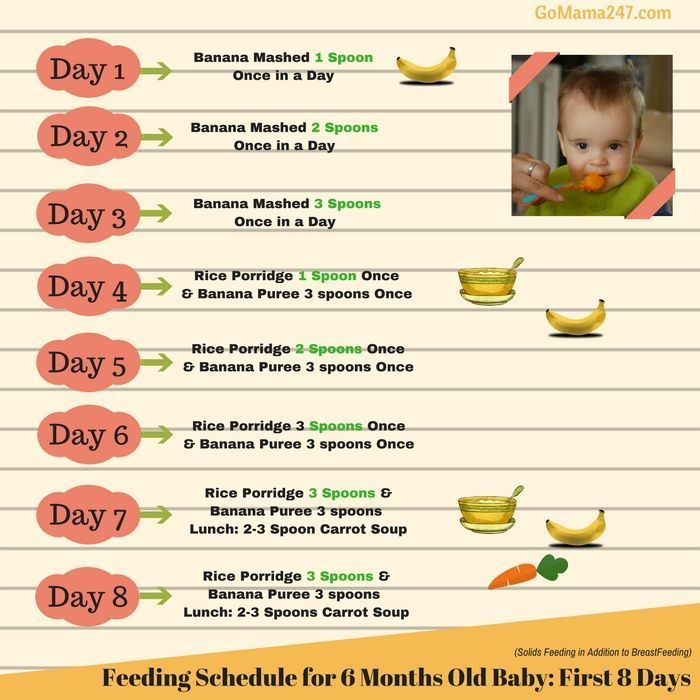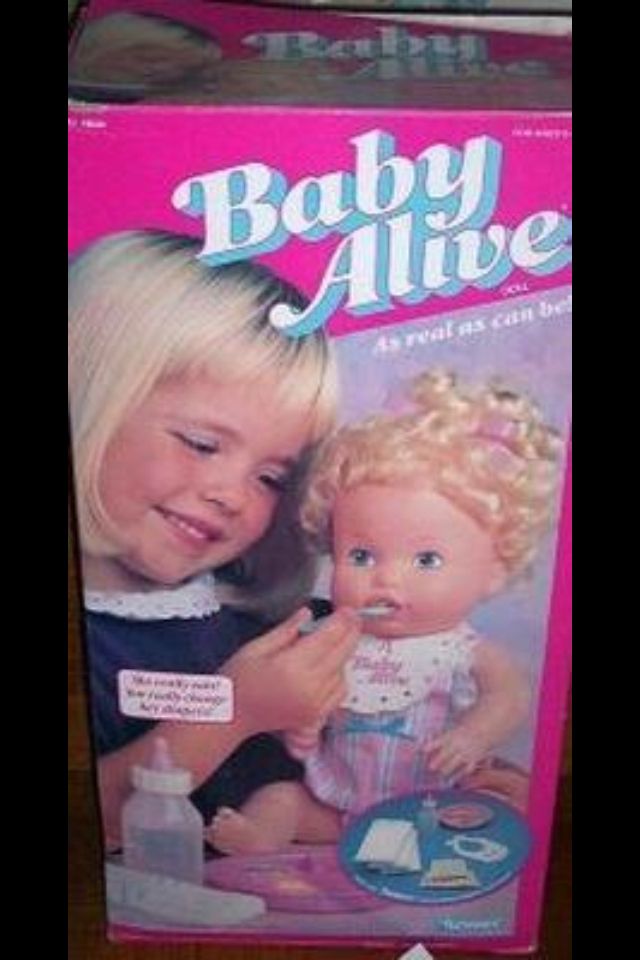Baby food from frozen fruit
Homemade Baby Food Fruits and Vegetables FAQ page. Learn about preparing fruits and vegetables for homemade baby food, find answers to common questions about Preparing, Storing and Making Homemade Baby Food from Fruit and Vegetables
1. Why do you have recipes to cook fruit?
Can I give my baby raw fruits? Many pediatric sources recommend cooking fruits until baby is about 8 months old. Bananas and avocado are an exception. For infants who start solids prior to 6 months old, cooking fruits is recommended. Cooking fruits breaks them down thus enabling easier digestion in an immature tummy.An older baby will be better able to handle the fibers and sugars of raw fruits than will the baby who is younger and just starting on solids.The “skins” of the fruits should always be peeled, especially prior to 8 months old. Infants who are fed fruits that have been pureed raw, with skin/peel on, may not have any issues with digesting those fruits. There are no immediate life threatening health risk to a baby fed raw fruits however, you may find baby has some digestion and tummy troubles. This should pass once the fruit itself has been passed.Depending on the doctor to whom you are speaking, this recommendation may vary with age. Some doctors may say cooking fruits is not necessary at all.
NOTE: Peeled raw & ripe fruits are perfectly fine in a baby safe feeder. Why? The amount of fruit that your baby will actually manage to eat from the Baby Safe Feeder is very small. There is a difference between spoon feeding a baby fruit and allowing a baby to suck on fruit from the Feeder.
2. Peeling Fruits & Veggies – Do I peel fruits & veggies for homemade baby food?
Please visit our Peeling Fruits & Veggies page to learn more
3. Fresh Frozen or Canned vegetables and fruits for baby food?
It is always best to use Fresh whenever possible and whenever fresh is truly fresh. Using Frozen foods is the second best choice. Caveat: read the labels as many frozen vegetables contain added salt and frozen fruits may contain syrups.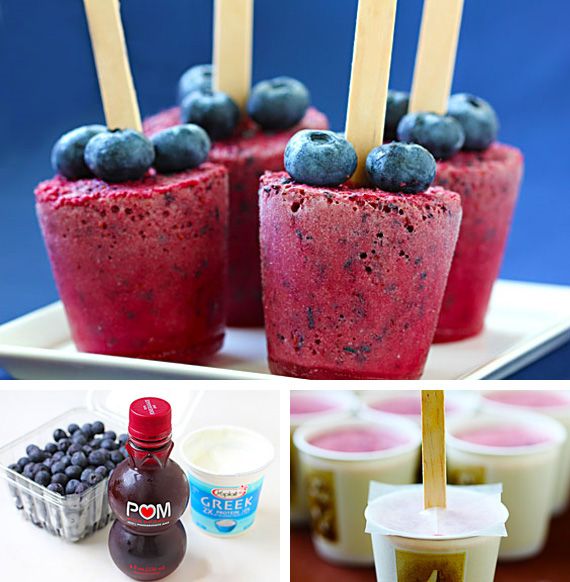
Why Not Canned Fruits and Vegetables for use in Homemade Baby Food Recipes? Canned vegetables and fruits for making homemade baby foods are not recommended for several reasons. Please read our Using Canned Food for Homemade Baby Food article to learn more.
4. Can I use Frozen Vegetables or Frozen Fruits in Homemade Baby Food Puree Form?
Yes – You can use frozen fruits and vegetables to make your homemade baby food recipes. Frozen fruits and vegetables for making homemade baby food may be a better alternative than fresh. Frozen fruits and veggies may be more fresh than fresh. Many sources and food authorities say that oftentimes frozen foods are more “fresh” than fresh. Were you to have the choice between a soft, bruised and less than Fresh acorn squash versus frozen squash to make homemade baby food, the choice for many people would be to purchase the Frozen squash.
Further, many fruits and vegetables that are seasonal may be unavailable as fresh and using their frozen counterparts is acceptable.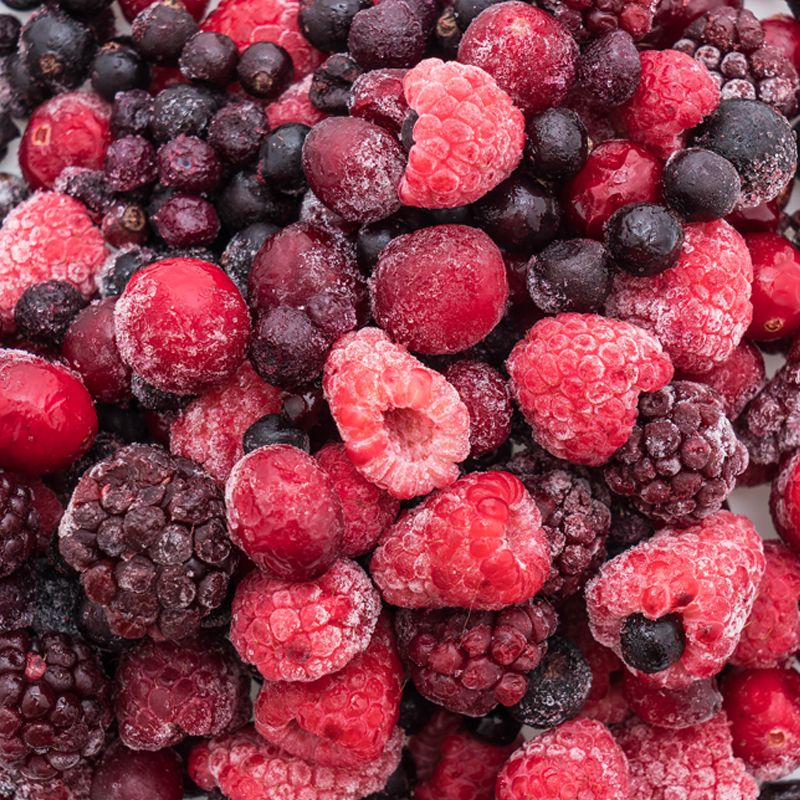 There is some debate about using Frozen foods to make baby food. There are a few books that do not recommend using frozen foods and then re-freezing those veggies or fruits. The recommendation in those books advocate that only 100% fresh foods be used for homemade baby foods.
There is some debate about using Frozen foods to make baby food. There are a few books that do not recommend using frozen foods and then re-freezing those veggies or fruits. The recommendation in those books advocate that only 100% fresh foods be used for homemade baby foods.
Oftentimes, those same books will recommend that only Organic foods should be used and that anything other than Organic and Fresh isn’t good and should be avoided entirely. This is untrue and sadly, often scares parents away from making their own baby food.
In a “perfect” situation, Organic and Fresh this is the BEST choice by far. However, there are many parents who do not and will not have economical or logistical access to only fresh fruits and vegetables (or Organic, locally farmed meats) than there are parents who do. In this instance, using frozen is far better than using canned.
5. Choosing Frozen Vegetables and Frozen Fruits for Homemade Baby Food
When choosing frozen veggies, look for those that contain no salt. If you cannot find any veggies that are salt-free, simply give the veggies a good rinsing prior to cooking them. When choosing frozen fruits, try to find those that are not frozen in syrups or other sugars.
If you cannot find any veggies that are salt-free, simply give the veggies a good rinsing prior to cooking them. When choosing frozen fruits, try to find those that are not frozen in syrups or other sugars.
There many fruits such as peaches, melons, avocado, blueberries and strawberries that are frozen “au natural” with citric or ascorbic acid being a possible additive. Frozen fruits should be cooked prior to pureeing and then freezing. You may wither steam or bake the fruits. If your baby is old enough to be served fruits that do not need to be cooked, take out the appropriate amount of fruits from the freezer bag, puree or mash and then store in the fridge for up to 72 hours.
ALWAYS ensure that you are not feeding baby directly from the bowl and then storing the bowl you fed from back in the fridge – take out the portion you will feed, put it into baby’s bowl and then put the bowl of food back into the fridge.
More about using Frozen Vegetables and Frozen Fruits for Homemade Baby Food
Do I cook the frozen fruits and veggies?
Frozen veggies/fruits are typically NOT cooked prior to freezing and packaging; hence why you have to cook and not just warm them. When you freeze purees that you have made from frozen veggies or fruits, you have cooked those veggies/fruits. Odds are that prior to freezing, those same foods have been picked at the peak of freshness and “flash” frozen for optimal taste and nutrient preservation.
When you freeze purees that you have made from frozen veggies or fruits, you have cooked those veggies/fruits. Odds are that prior to freezing, those same foods have been picked at the peak of freshness and “flash” frozen for optimal taste and nutrient preservation.
It’s safe to freeze foods that have been frozen AND cooked
Refreezing foods that have been thawed but not cooked, is not safe nor is it recommended.
For example, if you thaw out a roast, you then cook it and freeze the leftovers for another meal – this is ok and safe. If you were to thaw that same roast and then change your mind and toss it back in the freezer without cooking it, this is bad and could pose a health risk.
Bacteria will grow at a variety of different temperatures – temps close to freezing and even right to the boiling point of water. Bacteria that grow best at the middle of these temp ranges are mesophiles; those that are human pathogens and opportunists.
Is there a loss of nutrients with freezing?
Truth is, more nutrients are lost in the cooking of foods than are lost in the freezing of foods. Remember, the frozen fruits/veggies that you purchase have not been precooked (unless otherwise indicated on the label – do not buy these types if you find them). When you cook the frozen vegetable, it is the first time that that vegetable has been cooked.
Remember, the frozen fruits/veggies that you purchase have not been precooked (unless otherwise indicated on the label – do not buy these types if you find them). When you cook the frozen vegetable, it is the first time that that vegetable has been cooked.
Read more at our Freezing Homemade Baby Food Page
6. Should I Only Use Organic Foods?
Organic foods are healthier than most conventionally grown foods. This is due to the lack of, or a significant reduction in, chemicals and pesticides that are in and on foods that are grown organically. Buying and preparing Organic foods for homemade baby food has great health advantages for those infants. Their tiny bodies are not exposed to the levels of pesticides that are found in conventional foods.Pound for pound, an infant consumes more pesticides due to body size. When serving “nitrate” vegetables, the levels of nitrates in Organics are significantly reduced though not 100 percent eradicated (Nitrates are naturally occurring and farming without using nitrogen fertilizers does not eliminate nitrate concentration).
Read More about Choosing Organics
7. How Long Can I Keep Fruit & Vegetable Baby Food Purees in the Refrigerator?
It is recommended that fresh pureed homemade baby food be stored no longer than 48 hours (many food safety authorities say that 72 hour is fine.) in the refrigerator. This limit ensures that bacteria growth in the puree is kept to a minimum and that the food does not take on the “taste of the fridge”. This “rule” applies for veggies, fruits, meats etc.
If you do not plan to freeze your homemade baby food, we would suggest that you make the puree on a day to day, or every other day, basis. For example, one sweet potato may be baked and then you may freeze one half without pureeing it and then puree the other half. This method will help cut down “waste” and also allow for food safety.
8. Breast Milk and Formula for Making Fruit & Vegetable Purees
You should not use Previously Frozen Breast Milk to thin purées that you will then be freezing into baby food cubes.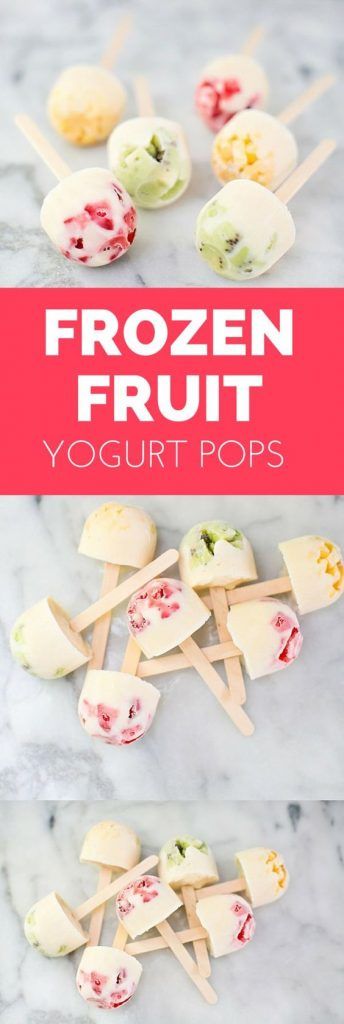
Breast Milk should never be re-frozen in any way or form. Using formula to thin and then freeze purées is acceptable.
Formula companies warn that you do not freeze Infant Formula due to a separation of the formula and not due to any health or nutritional risks. Keep in mind that the amount of formula used in purées is not equal to feeding an infant a bottle of formula.
“Freezing of any Enfamil formula is NOT recommended. Freezing infant formula can lead to physical property changes like fat separation, which may prove difficult for sensitive infants to digest. Freezing will not extend the expiration date of the formula.” “Freezing of our products may cause loss of desirable appearance and functionality (though not nutrition), and is not recommended.” Clinical Frequently Asked Questions, Storing Enfamil
You may wish to mash or puree your baby foods and freeze without thinning with any liquid. Should you decide to do this, you simply thaw the “un-thinned” food cubes and then thin the food cubes to the desired texture that your infant requires.
For more information, visit our Blog topic on using Formula in Baby Food Recipes
9. Best Cooking Methods for Fruit & Vegetable Purees
Baking, steaming or boiling in scant amounts of water is the best way to allow the vegetables to become soft while maintaining the nutrients. Use the leftover water to puree for optimal nutrient preservation. We prefer to bake fruits and veggies whenever possible as baking or roasting will enhance and bring out the flavor of the foods.
Be sure to cook frozen veggies as well, according to the package instructions and then puree as you would if you were using fresh veggies. When cooking vegetables that may contain nitrates, you might want to puree with water other than which the spinach/carrot/broccoli etc. was cooked in.
10. When do I Thin the Fruit & Vegetable Puree?
You may thin your purees either before or after freezing them. It really is an individual choice and is dependant on what you will be using as your liquid (previously frozen breast milk for example should never be re-frozen. ), many parents find it easier to thin their purees and then freeze. When baby moves on to more texture, it may be easier to simply freeze the purees and then thin upon thawing if needed.
), many parents find it easier to thin their purees and then freeze. When baby moves on to more texture, it may be easier to simply freeze the purees and then thin upon thawing if needed.
Read about Thinning and Thickening Homemade Baby Food
RELATED ARTICLES:
-
Transitioning to Sippy Cups between ages 6 months to 12 months.
-
Solid Food Stages & Feeding First SolidsMonth Range of Feeding Stages & Tips for Feeding First Solid Foods.
-
Introducing Solid Foods by Age Chart for information about what food to avoid and what foods are appropriate for certain ages.
-
How Much Food Should Your Baby Eat? Read our article and ease your mind.
-
Is My Baby Ready for Solids? Explore some key signs and points about the readiness for solid, complementary feedings.
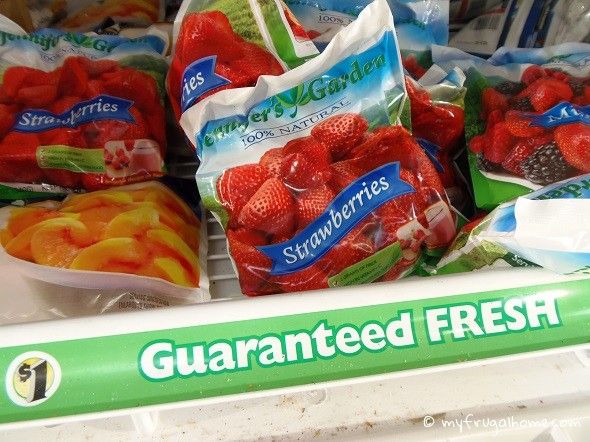
Remember, always consult with your pediatrician regarding introducing solid foods to your baby and specifically discuss any foods that may pose allergy risks for your baby.
SHARE ON FACEBOOK SHARE ON PINTEREST
Frozen Fruits & Vegetables for Babies? — Malina Malkani
But are frozen fruits and vegetables less nutritious than fresh versions? And are frozen fruits and veggies healthy for babies in particular?
Were they cleaned before freezing?
How do you know what the quality was before the produce was frozen?
What about bacteria and pesticides?
Let’s take a closer look at the pros and cons of feeding babies frozen fruits and veggies.
What are the Benefits of Feeding Babies Frozen Fruits & Vegetables?
Have you ever reached into the produce drawer with a plan to make a salad, only to find wilted lettuce and rotting vegetables?
When the freezer is stocked with bags of frozen fruits and veggies, produce is available and [almost] ready to eat whenever you need it. Greater availability means having more fruits and vegetables at meals and snacks. Which is a good thing!
Greater availability means having more fruits and vegetables at meals and snacks. Which is a good thing!
According to the Dietary Guidelines of Americans, babies 1 to 2 years old should consume ½ cup to one cup of fruit and ⅔ cup to one cup of vegetables daily, depending on age, gender, and physical activity level.
Unfortunately, that's not happening.
Approximately 60% of toddlers eat the recommended amount of fruit and only about 10% of 1 to 2-year-old toddlers eat the recommended amount of vegetables, with 5% of those vegetables coming from snacks like potato chips.
As a pediatric dietitian, my goal is to help parents build variety, balance and nutrient-density into family meals and snacks, with an eye toward including fruits and vegetables every day in a variety of different forms. Frozen vegetables and fruits help make that goal easier, because they are convenient, affordable, and long-lasting.
Here are some additional benefits of frozen vegetables and fruits:
Farm fresh produce is frozen at peak ripeness, which “locks in” nutrients
A rainbow of produce is always available in your freezer, regardless of season
Flash frozen produce retains most vitamins and minerals, so it's a nutritious alternative to fresh stored fruits and veggies
Freezing preserves food without the use of preservatives and additives
Produce is conveniently cleaned, peeled, pitted, and sliced for you
The consistency makes a nice, frothy smoothie!
Cooked frozen vegetables are soft and easy for babies to chew and swallow
Some frozen produce may even outperform fresh in levels of certain nutrients, including calcium, magnesium, zinc, copper, iron, fiber, riboflavin, vitamins C and E, and total phenolics, according to a 2015 study in the Journal of Agricultural and Food Chemistry.

Best frozen vegetables & fruits for babies:
Below is a list of frozen vegetables and fruits that work particularly well for babies from about 6 months of age who are showing signs of readiness for solids. These foods freeze well and are versatile and highly nutritious. Look for the plain varieties at the grocery store that are frozen without sauce, added sugars or added salt.
Spinach - cook chopped spinach and let babies self-feed. Or, add spinach to this baby-friendly omelet. Tip: squeeze the excess water out of defrosted spinach before using it in recipes.
Broccoli - cooked and chopped broccoli florets are an excellent food for baby-led weaning. (Yes, babies will eat broccoli!) Babies can self-feed tender-cooked broccoli florets using a palmar grasp (usually 6-9 months) or broccoli chopped into small, chick-pea sized, tender bites for babies using a pincer grasp (usually 9-12 months).
 Try also tossing it in soups, casseroles, or baby-friendly stir-fries. Frozen broccoli is amazing in this soup that the whole family can enjoy together.
Try also tossing it in soups, casseroles, or baby-friendly stir-fries. Frozen broccoli is amazing in this soup that the whole family can enjoy together.Cauliflower - offer chopped, mashed, or pureed cauliflower to babies to self-feed.
Butternut squash - cube the butternut squash into small, tender bites so your baby can easily pick it up. This fall favorite also whips up into a nice and thick mash or puree for an easy side dish.
Strawberries - frozen strawberries that are defrosted are soft, squishy, and an excellent texture for babies who are learning to eat.
Mango - frozen mangos pureed with plain, full-fat yogurt whip into a creamy, nutritious, cold treat that babies love.
Is there a Downside to Frozen Produce?
Freezing can damage a plant’s cell structure, changing the texture. Defrosted fruits and veggies can be soft and watery and won't work in all recipes.
 And you might not like the changes in flavor, appearance, and textures of certain veggies. For example, frozen veggies won't caramelize in the oven or on the grill, and they're much softer (which is good for babies!)
And you might not like the changes in flavor, appearance, and textures of certain veggies. For example, frozen veggies won't caramelize in the oven or on the grill, and they're much softer (which is good for babies!)Some brands also have frozen vegetables in high sodium sauces, while other fruit smoothie mixes contain added sugars. When feeding a baby, skip the extra sodium and added sugar and save room instead for the valuable nutrients babies need.
Not all vegetables freeze well. Freezing wilts leafy greens. Heartier leafy greens like spinach and kale freeze well, but they are limited to use in soups or casseroles or as a cooked side dish. Lettuce or other greens that you'd typically eat raw cannot be frozen.
Are Frozen Fruits & Veggies Safe for Babies?
Consumer Reports tested 300 samples of eight kinds of frozen produce, and they didn't find bacteria in amounts that would make someone sick.
Frozen fruits and vegetables are considered low risk for bacterial contamination. They can still contain Listeria monocytogenes, salmonella, and E. coli, the bacteria that cause foodborne illnesses, but cases are very rare.
They can still contain Listeria monocytogenes, salmonella, and E. coli, the bacteria that cause foodborne illnesses, but cases are very rare.
Recently, the food industry took additional steps to ensure the safety of frozen fruits and vegetables. For example, they sample for listeria and have established methods to clean and sanitize the freezing equipment.
During processing, most frozen vegetables are first blanched in hot water or steamed but are not cooked. The low temperatures of freezing inactivate harmful bacteria but still may contain some bacteria. So, frozen veggies still need to be cooked, in order to make them safe to eat.
But don’t worry, you don’t need to cook frozen fruit! According to the American Frozen Food Institute (AFFI), because of the way they are cleaned during processing, frozen berries and other fruits are safe and don't require cooking.
What to Look for when Buying Frozen Fruits & Veggies
Most people choose frozen produce by brand, price, or whatever is available at the store. Here's more information to help you decide between all the available options in the frozen food section.
Here's more information to help you decide between all the available options in the frozen food section.
Organic vs Conventional
You can get either or both organic or non-organic frozen fruits and vegetables. Both are great, but know that there is no evidence that organic produce is “healthier” than fresh.
Some organically grown produce is kinder to the planet; if you prefer to shop organic and it’s in your budget, it’s helpful to look for the USDA Organic Label.
Unless you shop at a specialty store, you might not find a huge variety of frozen organic produce at your regular grocery store, which is fine - a smarter goal than eating only organic produce is to aim for more fruits and vegetables overall!
Grades
Did you know that frozen fruit and veggies are graded for quality?
The USDA has a grading system for individual fruits, mixed vegetables, and vegetables. The grades allow manufacturers to standardize fresh farm foods, but grading is voluntary. So, you won't see a USDA grade on all frozen fruits and vegetable packages.
So, you won't see a USDA grade on all frozen fruits and vegetable packages.
You might see U.S. Grade A (fancy), U.S. Grade B (choice), U.S. Grade C, and U.S. Grade D (substandard). When harvested, grades are determined by the food's size, odor, flavor, and defects. All the grades are edible, but you may notice a difference in taste and texture between the grades.
Tip: Use Grade A as a side dish. And use the Grade B and C fruits and veggies in smoothies, soups, casseroles, and purees.
Mechanically Processed
Frozen fruits and vegetables come in a variety of ways.
For example, spinach comes chopped or whole leaf. And broccoli is available as florets, chopped, or premium florets with longer stems. It depends on what you prefer and what works best for the meal.
As for fruit, strawberries come sliced or whole. And some fruit smoothie blends have added sugar (best to avoid when feeding a baby or toddler).
Can you make Homemade Baby Food from Frozen Fruits & Vegetables?
Not only can you use frozen produce to make baby food, it’s often easier to mash and puree frozen fruits and vegetables.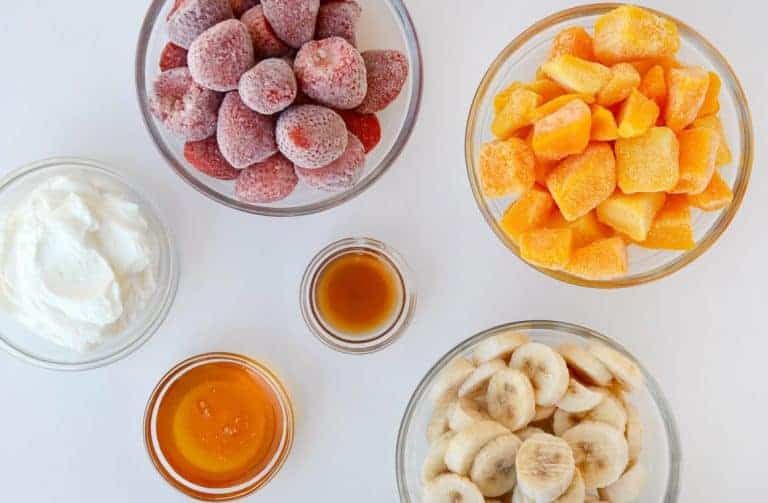
Here are a few tips for making baby food with frozen fruits and vegetables:
Thaw fruits and vegetables first
Cook all vegetables (frozen fruit doesn’t need to be cooked)
Mash, puree, or chop
Store in individual BPA-safe containers in the refrigerator for up to 2 days
Don’t refreeze after thawing
Final Thoughts
Frozen vegetables and fruits are an excellent way for us to get more produce into meals and snacks for babies and kids. That freezer stocked with frozen fruits and veggies has been a lifesaver for me many times when there's no time to wash, peel, and chop.
And they're healthy and safe for babies and kids as long as you cook frozen veggies. (Remember, blanching and steaming during processing doesn't kill all the bacteria.)
If you’re getting ready to start your baby on solids, download my FREE Baby-Led Feeding Essential Checklist to make sure you have everything you need to get started. You might also want to check out my new online course for parents, based on my best-selling book which will walk you through the whole process of starting solids using a baby-led approach.
You might also want to check out my new online course for parents, based on my best-selling book which will walk you through the whole process of starting solids using a baby-led approach.
Alternatively, if your baby is almost ready to start solids and you’re looking for someone you trust to map out the entire first 12 weeks of your baby’s solid food feeding journey, check out my new Safe & Simple 12 Week Meal Plan! Over 30 recipes, weekly shopping lists, tons of balanced baby meals, a complete plan for top allergen introduction, & lots of guidance (with photos) on how to safely serve each food.
And if you're looking for personalized nutrition support for yourself, your babies and/or your kids, I am currently accepting new clients in my virtual private practice. Looking forward to meeting you online…
Can children have frozen vegetables? Frozen vegetables in meals and purees
The most popular frozen products are vegetables and fruits. Freezing on an industrial scale of such products is carried out by the method of shock freezing, which makes it possible to preserve their useful properties throughout the entire shelf life.
In the process of freezing, water molecules in a food product turn into crystals that can break cell walls and destroy biologically important molecules (vitamins). The advantage of shock freezing is based on the fact that during normal gradual freezing, large ice crystals are formed, which have a damaging effect on cells, while during quick freezing, these crystals are smaller and do not destroy cells, while maintaining the main structure of the product intact. At the same time, shock freezing prevents contamination of the product with bacteria, preserves the taste characteristics of the product unchanged, does not change the consistency of the products, and prevents loss of liquid.
Such vegetables and fruits have a number of advantages that make it possible to recommend them for use in children's nutrition, especially in winter:
- up to 90% of vitamins are preserved, primarily vitamin C;
- freezing is carried out during the harvest season, which avoids long-term storage;
- there is no need to use preservatives, as cold is the best way to preserve the product from the action of microorganisms.

However, if the product was thawed and then re-frozen on the way to the consumer, then all the useful qualities of this type of food are lost. Therefore, it is important to make sure the quality of the frozen products you buy.
Make sure that all the ingredients in the bag are not frozen together, there is no ice crunch when you feel the bag at hand, and the expiration date has not been reached (usually 24 months).
Important!
An important point is the correct preparation of frozen vegetables: they must not be thawed before cooking, but should be immediately thrown into boiling water frozen. This will save most of the nutrients.
Can I cook frozen vegetables myself? It is possible, but it should be remembered that there will be no useful properties that we expect with shock freezing when freezing in a household refrigerator. However, using home-grown vegetables and fruits, frozen at home, you will still get advantages over long-term stored and processed vegetables and fruits during the off-season sale. However, the recommended shelf life of such products does not exceed 2 months.
However, the recommended shelf life of such products does not exceed 2 months.
Freezing is best done by laying vegetables and fruits on a baking sheet separately from each other, and when the fruits are frozen, put them in a special sealed bag without oxygen. Be sure to include the freezing date.
Frozen meat and fish dishes are also possible. However, these can only be semi-finished products. Ready-to-eat baby foods should not be frozen. The process of freezing semi-finished products from meat and fish is identical to the process of freezing vegetables and fruits. Baby food frozen this way can be stored for up to 2 months.
Look here for fruit and vegetable puree for crumbs
Frozen puree - harvesting vegetables and fruits for children for the winter » Suseki
Skwerl - Oct 12th, 2016
Categories: Freezing
Tags: Baby Puree, Frozen Pears, Freezing Vegetables, Apricot Puree, Pumpkin Puree, Blueberry Puree, Applesauce
trace elements. In summer, this is easy to do, there are many fresh vegetables and fruits, and in winter you need to come up with alternative options. A large number of manufacturers offer a wide range of ready-made baby purees, but are they really that good? After all, we do not know exactly what is in their composition, whether the technology of preparation and storage of products is correctly observed. And even if everything is fine there, then such a puree consists not only of vegetables and fruits, but at least sugar and thickeners are added there. So how to be? The answer is simple - make your own puree and store it in the freezer.
In summer, this is easy to do, there are many fresh vegetables and fruits, and in winter you need to come up with alternative options. A large number of manufacturers offer a wide range of ready-made baby purees, but are they really that good? After all, we do not know exactly what is in their composition, whether the technology of preparation and storage of products is correctly observed. And even if everything is fine there, then such a puree consists not only of vegetables and fruits, but at least sugar and thickeners are added there. So how to be? The answer is simple - make your own puree and store it in the freezer.
You can freeze in the form of puree absolutely any fruit, vegetable or even meat that a child can eat.
Ingredients: meat, vegetables, fruits
Time to book: Summer, Autumn
Contents
- 1 Freezing vegetable puree
- 9 Freezing fruit puree Storage features
- 4 Eating frozen baby puree
Freeze vegetable puree
Most often, mothers prefer to freeze seasonal vegetables, such as: zucchini, pumpkin, rhubarb, celery, green peas, cauliflower, broccoli, spring carrots, spinach. In order to freeze mashed vegetables, you must first bring these same vegetables to readiness. In this case, stewing vegetables is most suitable, this allows you to save more vitamins than boiling. It is necessary to cook each vegetable separately and strictly observe the cooking time, so the zucchini will be ready in 15 minutes, and carrots or cauliflower will need 7-10 minutes more. You can also add pre-cooked meat to vegetables, children love this puree very much. Immediately after cooking, while still hot, it is necessary to turn the vegetables into a puree using a blender or by rubbing through a sieve, put them in a clean, dry dish and send them to the freezer.
In order to freeze mashed vegetables, you must first bring these same vegetables to readiness. In this case, stewing vegetables is most suitable, this allows you to save more vitamins than boiling. It is necessary to cook each vegetable separately and strictly observe the cooking time, so the zucchini will be ready in 15 minutes, and carrots or cauliflower will need 7-10 minutes more. You can also add pre-cooked meat to vegetables, children love this puree very much. Immediately after cooking, while still hot, it is necessary to turn the vegetables into a puree using a blender or by rubbing through a sieve, put them in a clean, dry dish and send them to the freezer.
Freezing fruit puree
Fruit puree is even easier to prepare than vegetable puree. To prepare it, you just need to thoroughly wash the fruit, peel and puree them in any convenient way. Most often, mothers prefer to prepare mashed potatoes for their babies from apricots, peaches, plums, pears, apples. You can prepare a combined puree, for example, apple puree with blueberries, strawberries, currants or raspberries. These fruits lend themselves well to freezing and do not lose their taste and useful properties.
You can prepare a combined puree, for example, apple puree with blueberries, strawberries, currants or raspberries. These fruits lend themselves well to freezing and do not lose their taste and useful properties.
Storage features
When it comes to baby food, it is very important to follow the food storage technology so as not to harm the baby. It must be remembered that baby puree cannot be re-frozen, so it is necessary to use dishes that fit only one serving. These can be jars of store-bought mashed potatoes, small plastic containers, ice molds. If there was a power outage and the products melted, they will have to be thrown away, it is not safe to give this to a baby (
Consuming frozen baby puree
In order to feed a child with frozen vegetable or meat and vegetable puree, you need to take out one serving and heat it in a water bath or in a microwave oven to the desired temperature, add a little butter or vegetable oil and you can eat.
Fruit puree is simply enough to defrost at room temperature, without cooking.








